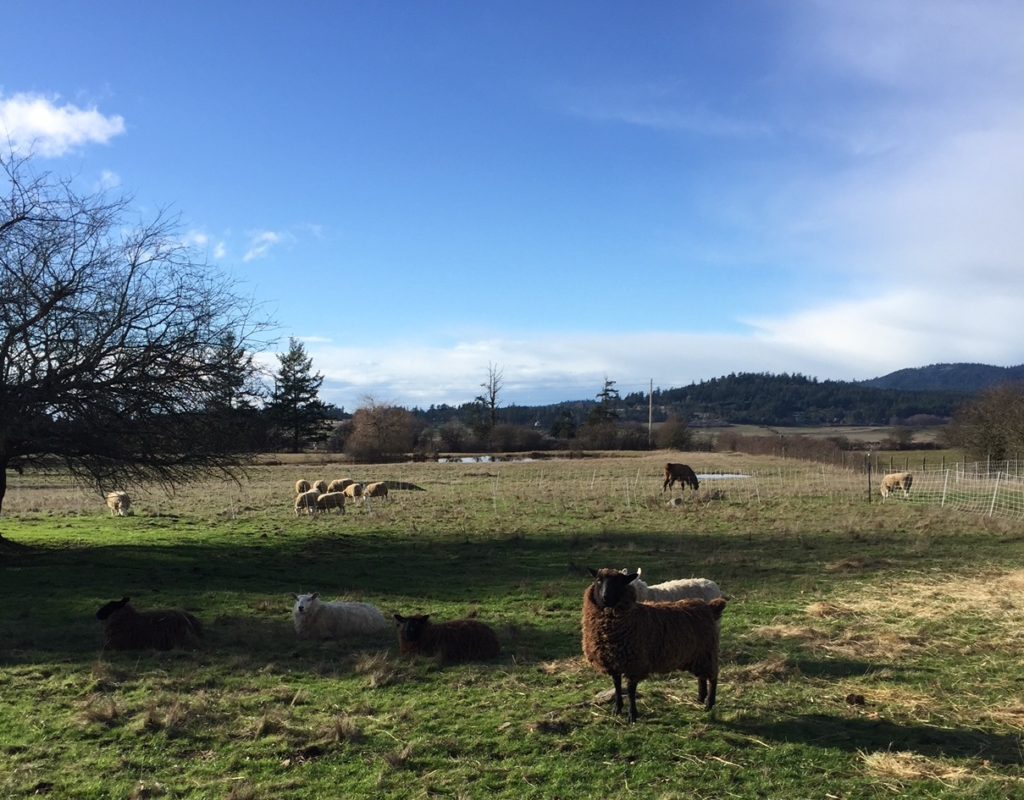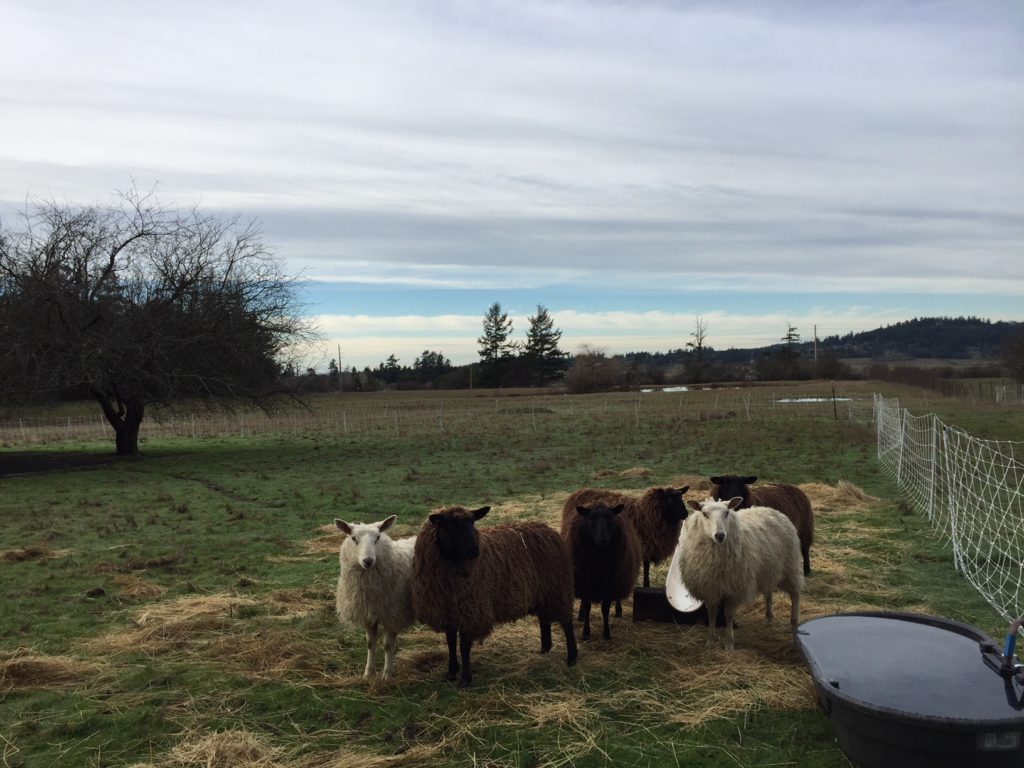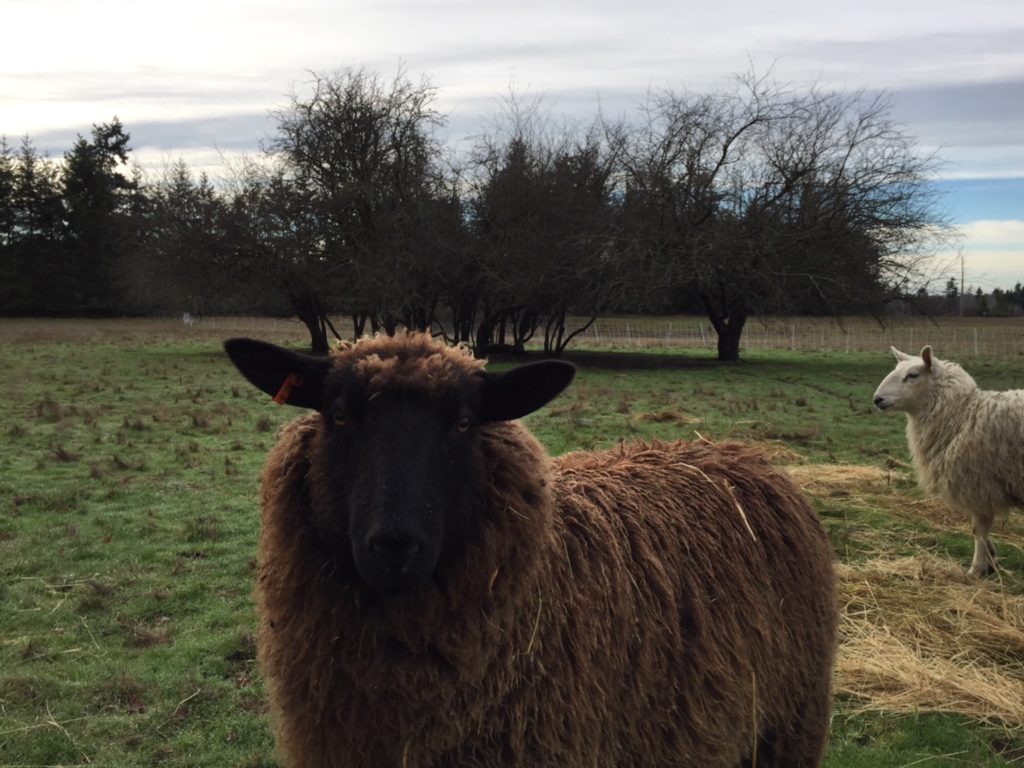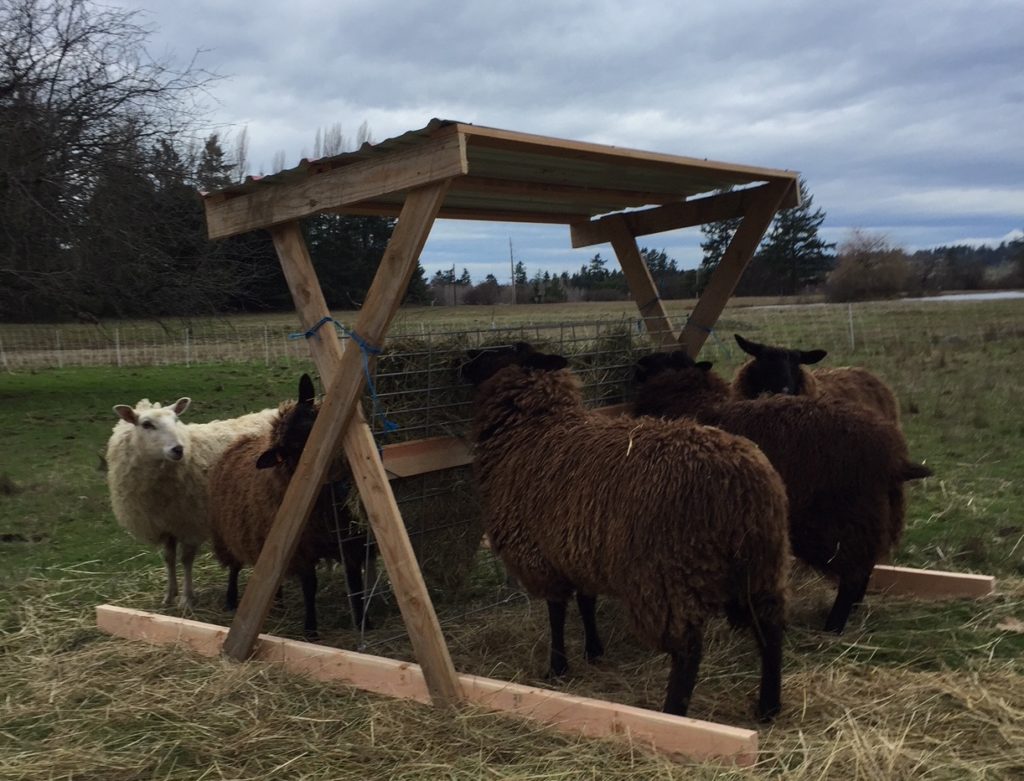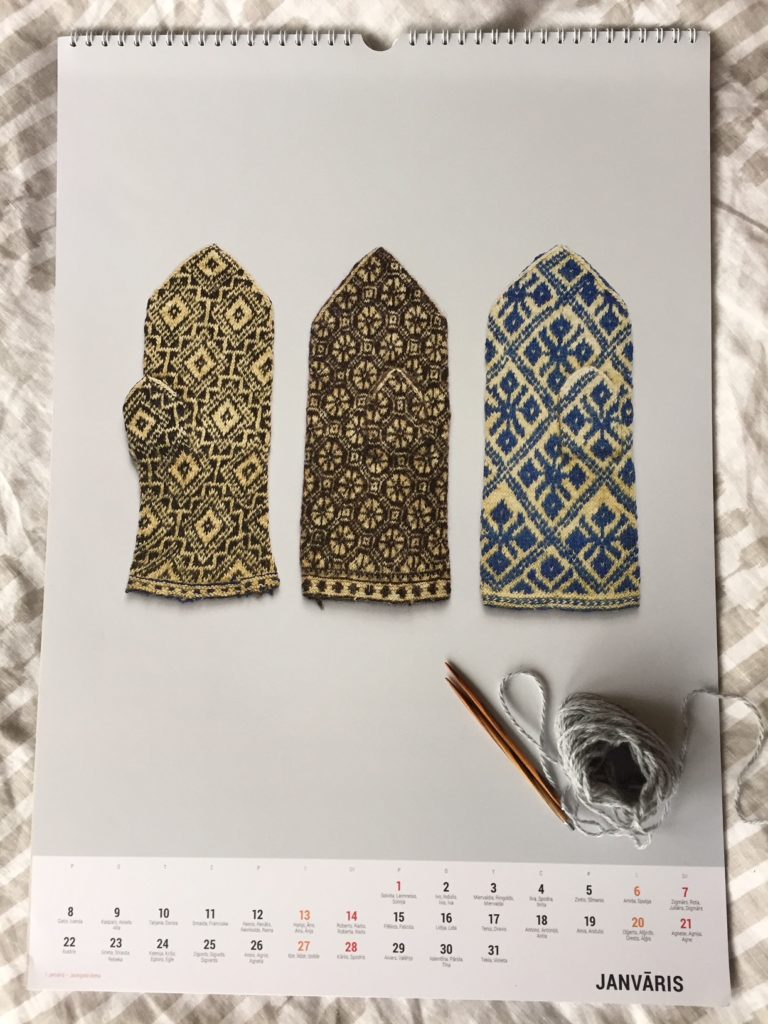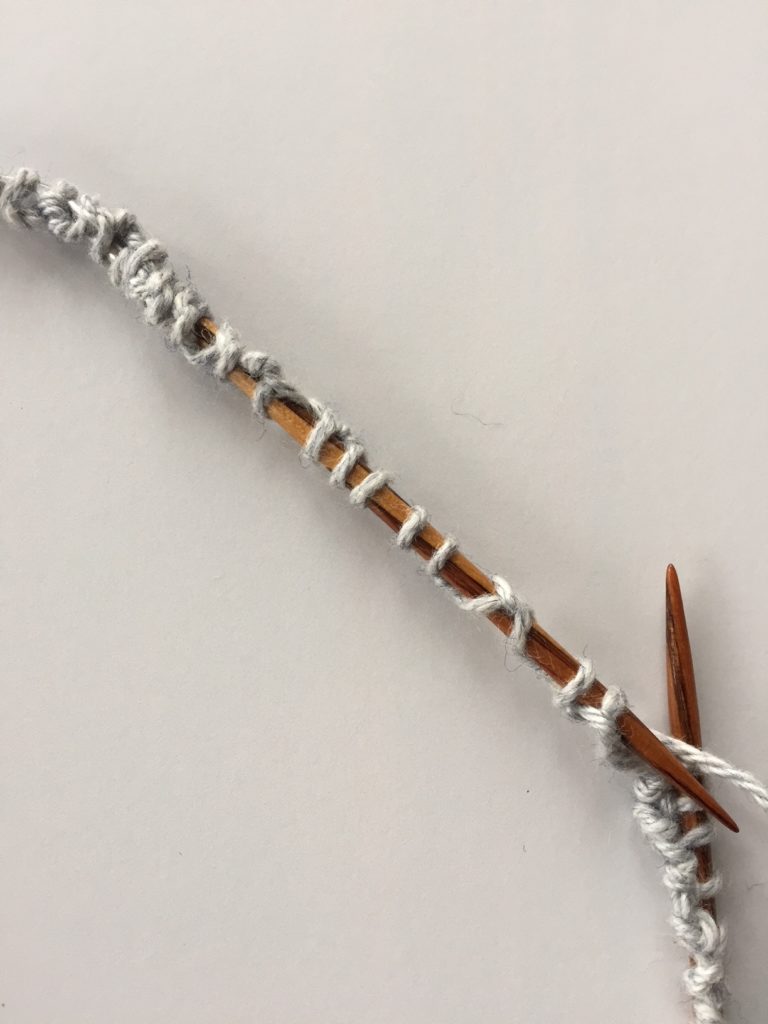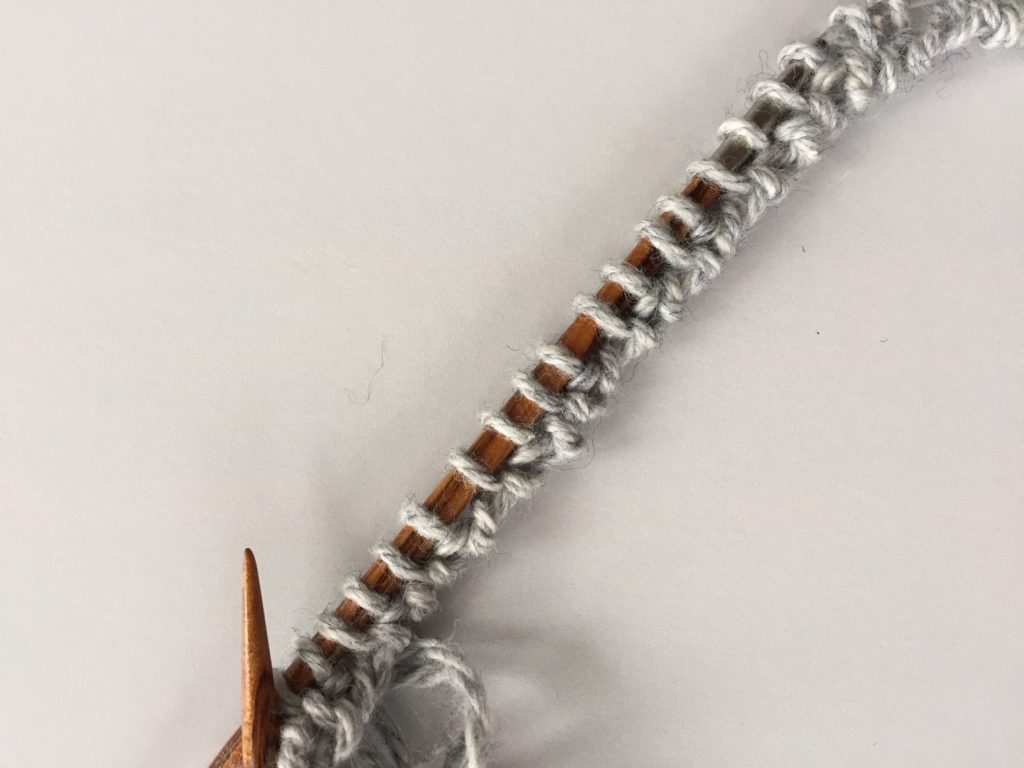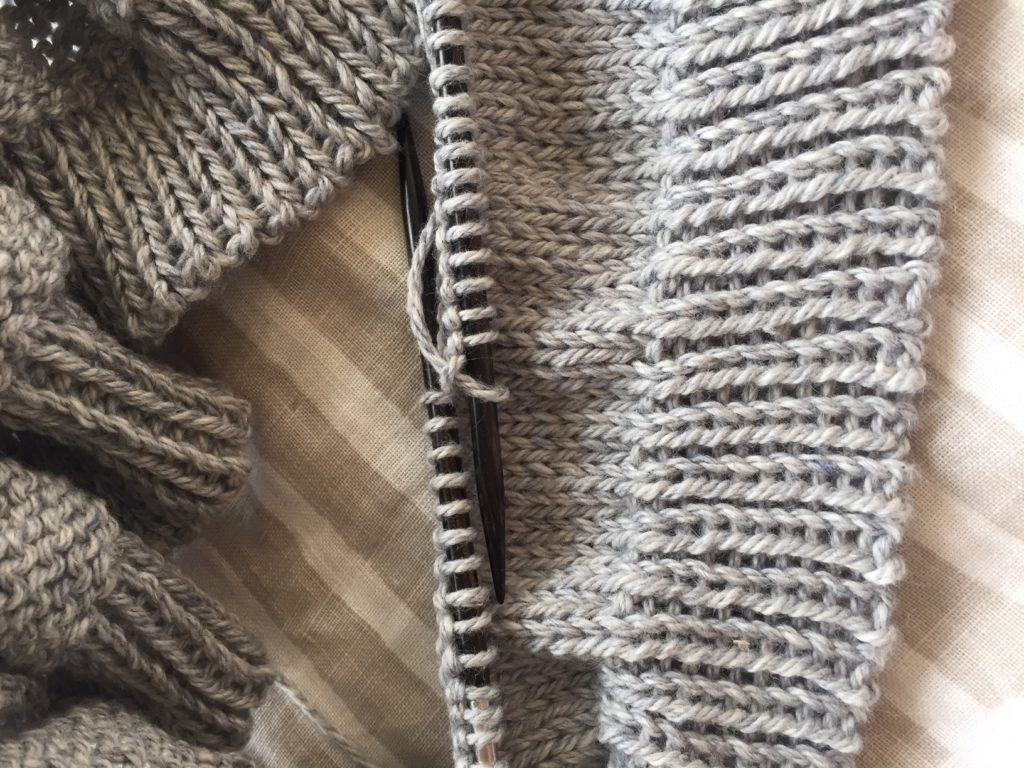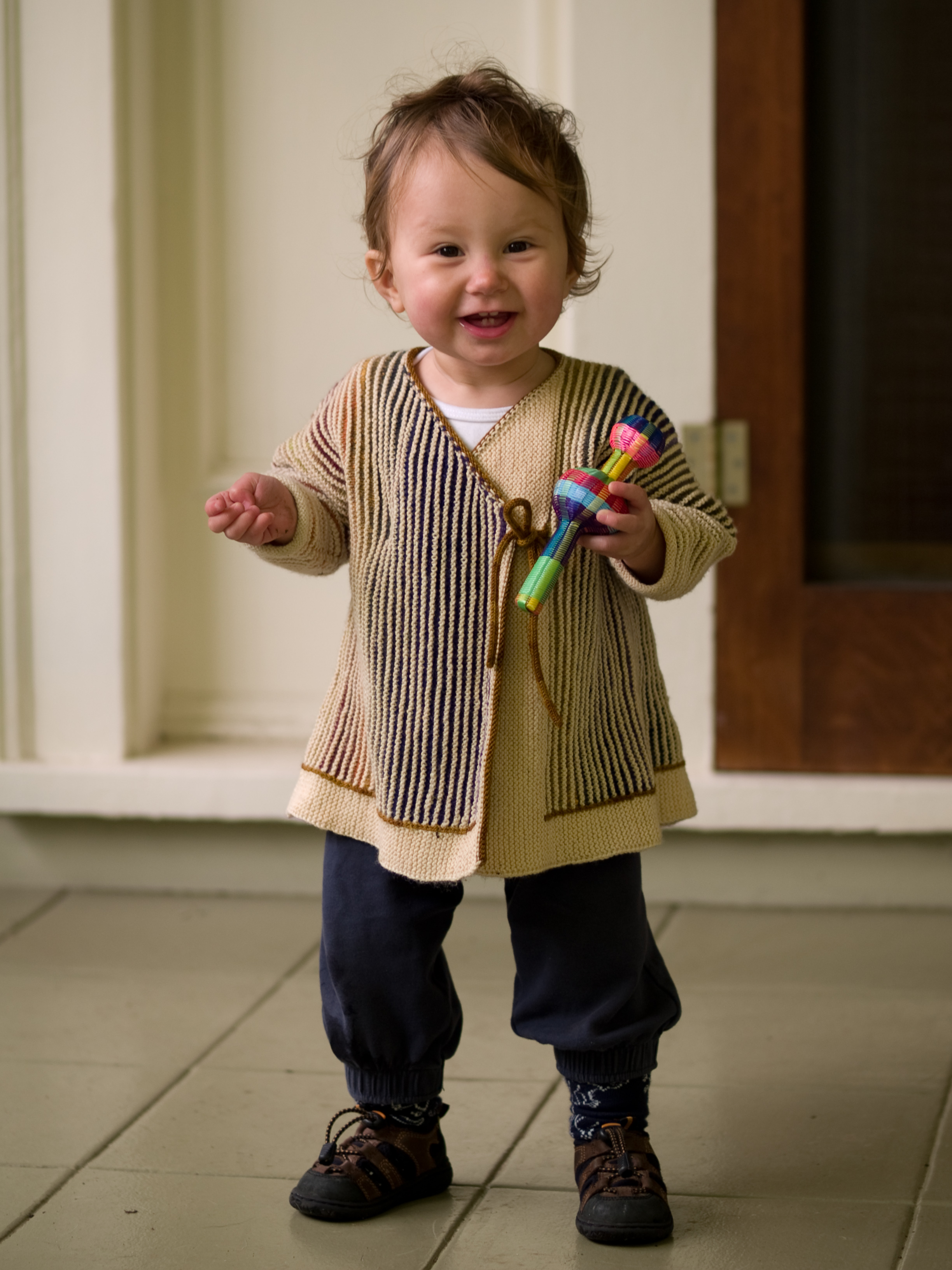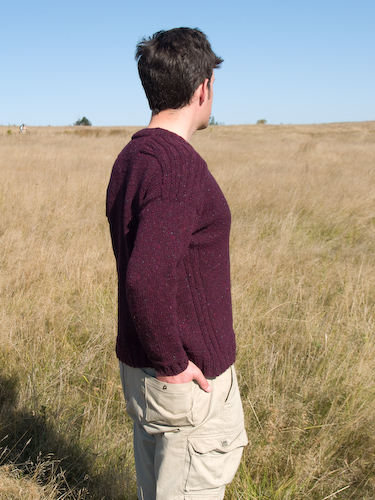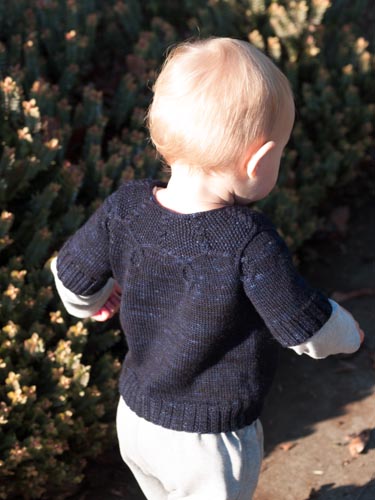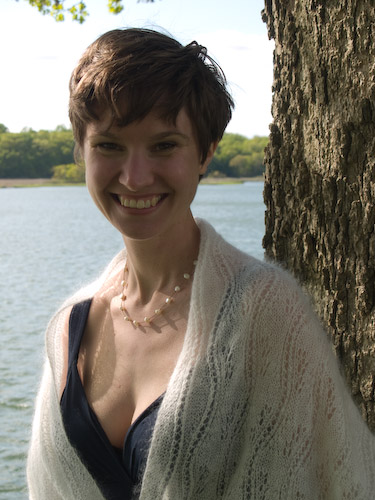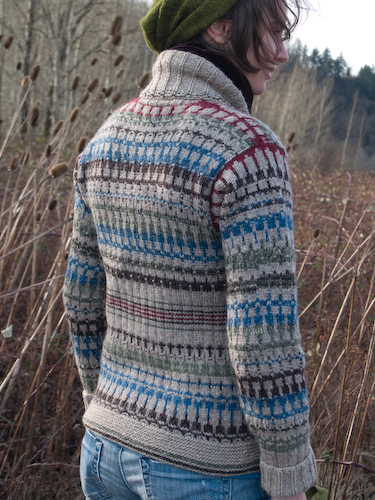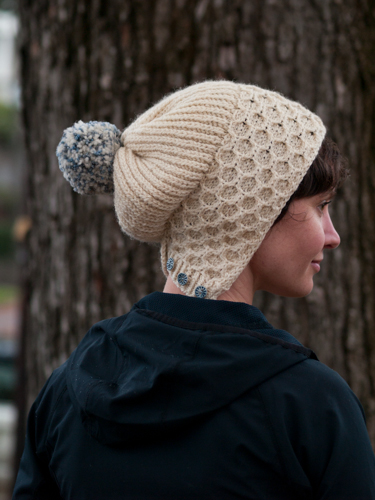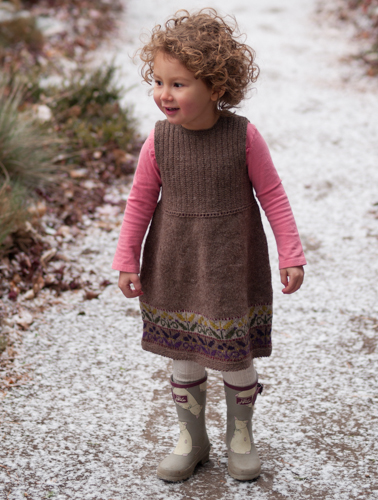We’re starting the new year with some very exciting (to me) additions to Oak Knoll Farm: wool sheep! If your knowledge of sheep is pretty general purpose, you’re probably not aware of the remarkable range of wool these critters can grow. But think about the variety of dog hair from poodle curls to husky fluff and you’ll begin to get the gist. Our North Country Cheviots grow a solid middle-of-the-road fleece, softer than people expect but more durable than famous breeds like Merinos, medium in length, unglossy and pure white when it’s clean. This wool takes color very well and can make a lovely sweater yarn. It’s largely overlooked by North Country breeders in the USA, who are more interested in the rapid growth, muscular body type, hardihood, and independent nature of these sheep. I’m keenly interested in producing and knitting yarn made of nothing but North Country wool.
Back in November I attended Deb Robson’s spinning retreat here on the island, and the focus this time was on crossbred fleeces. Sheep of mixed parentage can grow utterly gorgeous wool that blend the qualities of their purebred ancestors in unique and intriguing ways. They can also grow crap wool that’s the worst of everything, but therein lies the allure of trying to hone a particular type of fleece in a whole flock over many generations. You can get gold or garbage or anything in between. One woman who really did succeed at crossbreeding a handspinning flock with distinctive characteristics was Sally Bill on neighboring Lopez Island. The Sally Bill Specials are few in number now, but we got to sample a little of their wool at Deb’s retreat. (I think we all fell a little in love with a ewe called Mumsy.) Deb had more wool from Lopez sheep, too, and the fleece that immediately piqued my interest was a Blue-Faced Leicester x North Country/Coopworth cross. I could feel the North Country in it immediately, but the Coopworth and BFL made it sing a new song. I had to find out where it had come from, and I had to start thinking seriously about running a little crossbred flock of my own to see what I might achieve by way of variation on a North Country theme.
My Lopez contacts confirmed my hunch that the fleece was from Lucky Ewe farm. And it just so happened that friends of ours were already arranging to buy some ewe lambs from Lucky Ewe to cross with their Romney ram. I decided we’d better tag along. So we all dropped our kids at school and hopped the interisland ferry with the trailer in tow. Grown-up field trip! A long meander through the wooded country lanes of Lopez brought us to the field where the ewe lambs were waiting for us. Our friends picked out their five and then we loaded up half a dozen more to form the foundation of the Oak Knoll Fiber Flock.
They’re all from a BFL ram, and their mothers are a mix of Romney, Coopworth, East Friesian, and yes, North Country Cheviot. I’ve been in touch with the shepherd who tended the Lucky Ewe flock in its previous incarnation and he confirmed that he did indeed bring over rams from Oak Knoll Farm. We have two sets of twin sisters amongst our six, and from sheep to sheep there’s a lot of variety in their characteristics. Some look more like Romneys, some like BFLs, some like neither. One has suggestions of North Country in her Roman nose and clean, strong head — not to mention her tendency to watch our every move and dash for freedom if we approach — but her fleece is nearly black. All these girls have long, crimpy locks. It’s a treat to bury your hands in their wool.
I’ve named them after great queens of history. Eleanor is their leader, the only one bold and calm enough to approach us and nibble offerings from the children’s hands. Her sister Cleopatra is dubbed Patch for the white spot on her nose. Victoria is the short white one with North Country ears, and Maud has the noble BFL profile and wild eyes. Theodora is Vicky’s brown sister with splotches of white on one cheek. Zenobia is the dark chocolate girl I can’t wait to shear.
They’re separated from the North Countries while they acclimate to their new home, so I built them a covered hay feeder. It’s small and lightweight so that Adam and I can easily carry it about for mobstocking, but I’m proud to report it withstood yesterday’s gale without damage. The little queens seem to think it’s just right, too.
So here they are, back at the farm where their great-grandfather, perhaps, was born. My plans for them are wide open — half to our friend’s Romney and half to a North Country ram with a good fleece, perhaps? I’d like to add more Coopworth somewhere down the road if I could find a ram nearby. For now we’ll take it slow, get to know them, and eagerly await their first clip in March!
